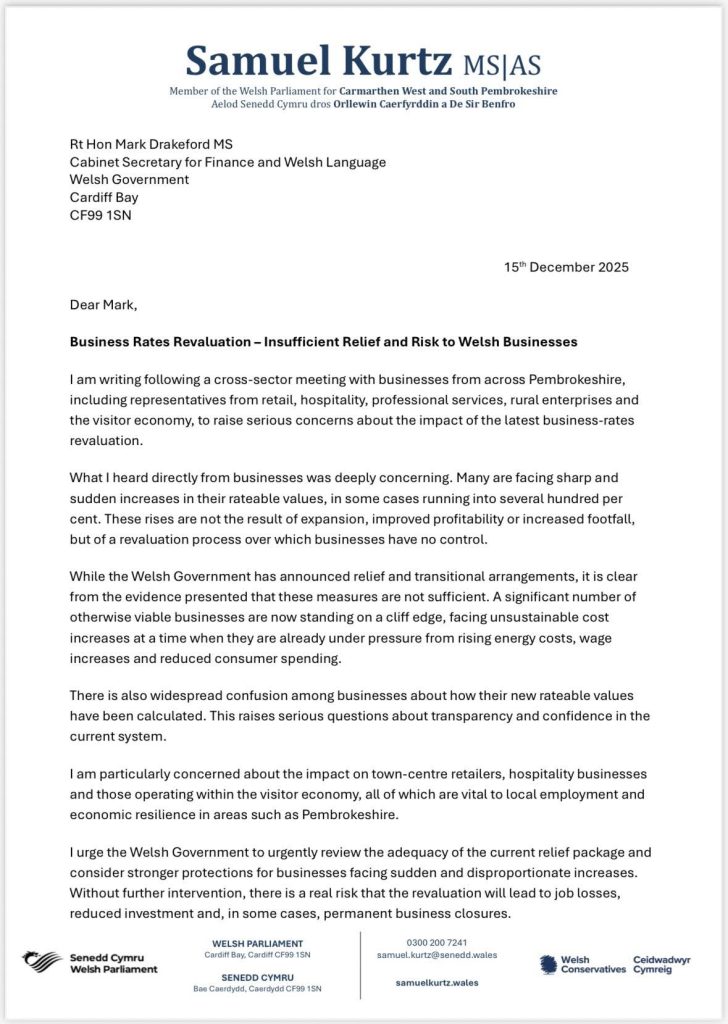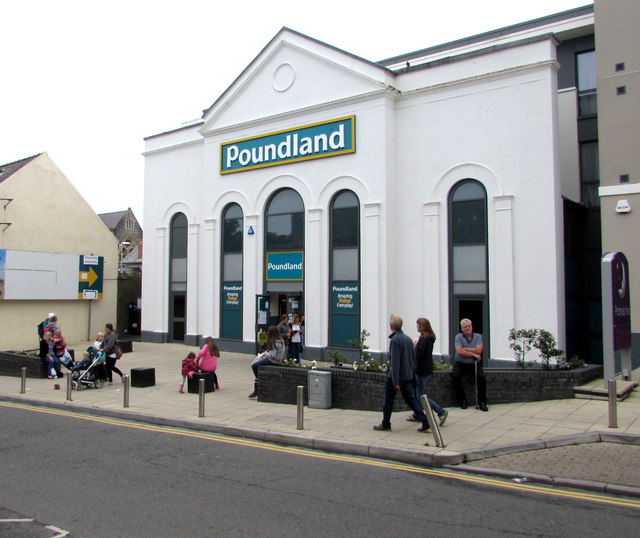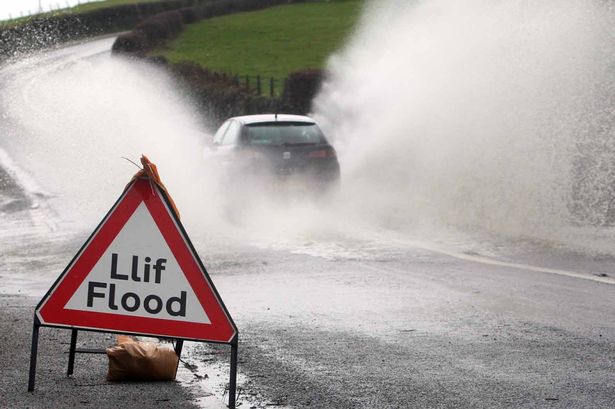Business
Ascona boss gives his views on rising petrol and diesel prices

DARREN BRIGGS, the Managing Director of Ascona Group has today taken to social media to express his personal views to the recent rise in oil prices.
Darren founded Ascona Group in 2011 in Pembrokeshire. He began his career in the industry with roles at Elf Oil UK Limited and Total UK Limited, before founding BigOil.net in2004, which he sold to the PRA in 2008. He is probably the best person in Wales to ask about fuel prices.

My personal response and views to rising fuel prices
The heightened geo-political tensions resulting from Russia’s invasion of Ukraine, and the package of economic sanctions imposed by the West in response, mean that we are seeing unprecedented increases in prices for crude oil and of course refined petroleum products (petrol, diesel and the like).
Russia is the second biggest oil producer in the world and the third biggest producer in terms of refined products. Almost 20% of the UK’s diesel is imported from Russia*
The question I get asked a lot is “why the big difference of fuel pricing between your sites and the supermarkets?”
The honest answer is that, ultimately, we will always attempt to be as competitive as commercially possible and sometimes we will retail fuel at zero or very little profit margin to remain competitive in a particularly price sensitive area. The Pembroke Dock and Pembroke area is a prime example (with competition from both Asda and Tesco). Note – Asda is an unmanned site, therefore no staffing costs!
Unfortunately for an independent business like Ascona, the supermarkets have an unfair commercial advantage.
Having worked in this sector for over 25 years, (I now feel old!) here is my insider knowledge:
The supermarkets buy their petrol and diesel on a previous (up to) a 3 weekly ‘lag’. What does this mean?
In simple terms, the fuel they sell today is based on the cost price 3 weeks ago. So when the cost prices sky rocket (as they have in the last 2 weeks), the supermarkets are still buying fuel at a substantially lower price than independent fuel retailers.
So how do independent fuel retailers buy petrol and diesel?
Most fuel supply contracts in the independent market usually last for between 3 or 5 years, and are linked to the Platts commodity price assessment for North West Europe (refined products for petrol and diesel). These products are traded in $ per tonne and then converted into pence per litre using density factors and the exchange rate between sterling and the dollar. There are other elements such as bio fuels, ethanol and others, but let’s try and keep this as simple as possible!
Is there a big pricing lag for independent retailers?
Sadly, no! We do not enjoy a 3 weekly lag that supermarkets do. However, we do have the choice between a weekly lag or a previous day market on close price.
In a very volatile market (like now) the weekly lag offers some protection or comfort in a rapidly increasing market, but if any particular forecourt or business has a high volume of sales, this is short lived.
When prices are volatile and increasing on a daily basis, having fuel delivered from your supplying oil company based on a previous day market on close price means that it is extremely difficult to remain competitive. In fact, it is impossible. If you take the average of last weeks prices, petrol and diesel have risen by over 7 and 12 pence per litre respectively. A forecourt operating on a previous day price would have to pass on these huge cost increases immediately. Not doing so would be commercial suicide, but this leads to big price differences at the pole sign!
It should be noted that all Shell branded dealer sites across the UK operate on a previous day market on close price. I estimate over a third of dealers operate on a previous day market on close price.
Ultimately, ours is a very tough industry to be in. Forecourts have to rely on retail shop sales and other associated retail services to remain competitive and to make a net profit.
Taking into account the increases in energy costs and minimum wage increases this year, the average petrol forecourt in the UK costs over £20,000 a month to run. Fuel volumes are still around 90% of pre-covid levels and fuel margins remain between 5 and 9 pence per litre depending on price sensitivity of the local area, since Covid.
However, the fuel margins in the coming weeks will inevitably reduce as we try and remain as competitive as possible within the UK retail fuel market. There will be significant price differences in pole sign prices.
I will leave you with a final thought …
Whilst the mainstream media is bemoaning fuel retailers for increasing prices at the pole signs, international wholesale markets are in fact driving global change for reasons identified at the beginning of my post.
The UK, in fact, probably has cheapest petrol and diesel in Europe when you deduct motor fuel duty and VAT. But of course someone has to pay for furlough?
*source – Goldman Sachs strategic review February 2022.
Business
Pembrokeshire businesses warn rates revaluation could force closures

LOCAL businesses from across Pembrokeshire have warned that sharp increases in business rates could lead to redundancies and closures, following a public meeting held in Saundersfoot on Monday (Dec 15).
The meeting, held at the Hean Castle venue, brought together traders from retail, hospitality, professional services and the visitor economy to raise concerns about the impact of the latest business rates revaluation, which will take effect from April 2026.
Among those attending were Samuel Kurtz MS, Conservative Member of the Senedd for Carmarthen West and South Pembrokeshire, and Pembrokeshire County Councillor Jonathan Grimes, who represents Pembroke St Mary South and Monkton.
Businesses described sudden and significant increases in rateable values, with some reporting rises of more than 100%, despite no expansion in premises or improvement in trading conditions.
Evidence presented to the meeting highlighted concerns first identified by Pembrokeshire County Councillor Huw Murphy, who has been raising the issue locally and working with businesses, The Herald and S4C to bring the scale of the increases to public attention.
Cllr Murphy was unable to attend the Saundersfoot meeting, but details were provided on his behalf by Lee Bridges, drawing on information from businesses in the Newport & District Chamber of Trade area and Dinas Cross.
Figures relating to twenty local businesses showed that eighteen are facing increases in their rateable values, with one business hit by a 140% rise from April 2026. The average increase across the group was 36%, pushing the combined rateable value from £499,000 to £679,000 — an additional £180,000 burden due to take effect within four months.
One affected business has already warned that staff redundancies will be “unavoidable” if the increases go ahead.
Attendees criticised the Welsh Government’s transitional relief arrangements, describing them as inadequate and warning that they fall short of the support currently available to parts of the tourism and hospitality sector.
Tourism and hospitality account for an estimated 23% of Pembrokeshire’s economy, and those present warned that unchecked increases could have a serious impact on employment in coastal communities dependent on visitor trade.
The 2026 revaluation is based on rental values from April 2024 and has sparked concern across the county, with reports elsewhere in Pembrokeshire of increases of up to 400%.
Following the meeting, Mr Kurtz confirmed that he has written to the Cabinet Secretary for Finance and Welsh Language, Mark Drakeford MS, warning that current relief measures are insufficient and risk “pushing otherwise viable businesses over a cliff edge”.
He said businesses are already making decisions to close as a direct result of the projected increases and called for urgent action to protect jobs and local economies.
Businesses are being urged to check their new rateable values on the Valuation Office Agency website and to seek advice or contact their local representatives if they believe the figures are inaccurate or unsustainable.
Image caption:
Business rates meeting: Traders gather in Saundersfoot to raise concerns over impending increases, with Samuel Kurtz MS addressing attendees (Pic: Sam Kurtz MS)


Business
Computer gaming lounge plans for Tenby cinema submitted

FORMAL plans to turn Tenby’s former Poundland and Royal Playhouse cinema to a retro computer gaming lounge have been submitted to the national park.
Following a takeover by investment firm Gordon Brothers, Poundland shut 57 stores earlier this year, including Tenby’s branch on White Lion Street.
In an application to Pembrokeshire Coast National Park, Matthew Mileson of Newport-based MB Games Ltd, seeks permission for a change of use of the former Gatehouse (Playhouse) Cinema, most recently used as a Poundland store to a retro gaming lounge.
This follows a recently submitted application for a ‘CONTINUE? Retro Gaming Lounge’ sign on the front of the former cinema, ahead of the wider scheme for a retro gaming facility at the former cinema site, which has a Grade-II-listed front façade.
A supporting statement for the change of use scheme through agent Asbri Planning Ltd says: “The proposed retro gaming lounge will be inviting to all ages, including families, groups and individuals with no age restriction. The applicant has several similar premises across other parts of the UK and operates under a successful business model.
“This includes a fee being payable to enter the premises which thereby grants access to unlimited game time to all consoles/arcade machines. There will be no slot or coin-based reward games, so the proposal would not be considered/classed as gambling. The site will provide snacks and drinks (including alcohol) which will be canned/bottled drinks.
“The sale of such drinks would be ancillary to the overall function of the premises, and a separate alcohol licence will be submitted, accordingly.”
It adds: “The development would provide a much-welcomed addition to White Lion Rd which will improve the vitality and viability of the immediate area by promoting greater levels of footfall within the area and introduce greater variety to the shopping frontage at this location.”
It proposes opening hours of 10-10, Sunday to Thursday, and to 11pm on Fridays and Saturdays.
The application, and the related signage scheme, will be considered by park planners at a later date.
Prior to being a Poundland, the site was the Royal Playhouse, which had its final curtain in early 2011 after running for nearly a century.
The cinema had been doing poor business after the opening of a multiplex in Carmarthen; in late 2010 the opening night of the-then latest Harry Potter blockbuster only attracted an audience of 12 people.
Business
Independent brewers join call for business rates relief as pub closures feared

INDEPENDENT brewers have joined growing calls for urgent, pub-specific relief on Business Rates amid fears that community pubs across west Wales and beyond could be forced to close.
The Society of Independent Brewers and Associates (SIBA) has warned that changes announced in the Autumn Budget will see pub costs rise sharply over the next three years, with the average pub facing a 76% increase in Business Rates. By comparison, large warehouse-style premises operated by online and technology giants are expected to see increases of around 16%.
The issue will be discussed at a meeting taking place on Monday in Saundersfoot, where local publicans, small brewers and business representatives are due to come together to examine the impact of rising Business Rates and escalating operating costs. The meeting is expected to focus on the future sustainability of community pubs, particularly in coastal and rural areas where they often act as vital social hubs as well as key local employers.
Independent breweries are particularly exposed, SIBA says, as the vast majority of their beer is sold through local community pubs. Many small breweries also operate their own pubs or taprooms, meaning they are hit twice by rising rates. Some independent brewers have reported rateable value increases of up to 300%, creating new costs they say will be extremely difficult to absorb.
New industry research published on Thursday (Dec 12) suggests that introducing a pub-specific Business Rates relief of 30% from April 1, 2026 could protect around 15,000 jobs currently under threat in the pubs sector and help prevent widespread closures.
The call for action follows an open letter sent last week by SIBA’s board, expressing deep concern at the impact of the Budget’s Business Rates decisions on the hospitality sector.
Andy Slee, Chief Executive of SIBA, said: “The last orders bell is ringing very loudly in our community pubs after the shock changes to Business Rates in the Budget.
“Publicans and brewers feel badly let down by a system that still isn’t fairly addressing the imbalance between big global tech companies and small business owners.
“We were promised proper reform of Business Rates in the Labour manifesto last year and a rebalancing of the tax regime, but this has not been delivered. Pubs therefore need urgent help to address the planned increase in costs through a pub-specific relief, followed by full and meaningful reform.”
Those attending Monday’s meeting in Saundersfoot are expected to consider how local voices can feed into the national debate and press for urgent action to protect community pubs across Pembrokeshire.

-

 Crime6 days ago
Crime6 days agoPhillips found guilty of raping baby in “worst case” judge has ever dealt with
-

 Crime5 days ago
Crime5 days agoKilgetty scaffolder sentenced after driving with cocaine and in system
-

 Crime5 days ago
Crime5 days agoHousing site director sentenced after failing to provide breath sample following crash
-

 News1 day ago
News1 day agoDyfed-Powys Police launch major investigation after triple fatal crash
-

 Crime5 days ago
Crime5 days agoMotorist banned for three years after driving with cannabis in system
-

 Crime2 days ago
Crime2 days agoMan spared jail after baseball bat incident in Milford Haven
-

 Education4 days ago
Education4 days agoTeaching assistant struck off after asking pupil for photos of her body
-

 Crime6 days ago
Crime6 days agoMilford Haven pensioner denies exposure charges



























